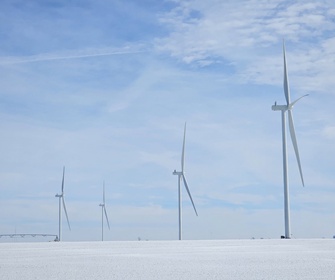With Target Grid, TenneT introduces a new approach designed to cope with the tremendous challenges of the energy transition. The objective is to have an electricity grid in place by 2045 for a flourishing, sustainable economy, always with enough green electricity for everyone, ranging from consumer to industry.
With Target Grid, TenneT is proposing a network of DC (direct current) superhighways and energy hubs, the DC grid (electricity superhighways), and a significantly improved existing AC (alternating current) grid. This combination of energy hubs - connected by superhighways - will ensure that renewable electricity can be transported long distances from the North Sea to consumers and industry, and that the electricity grid remains reliable.
Target Grid is based on the highest electrification scenarios of the Dutch II3050 (Integrated Infrastructure Survey 2030-2050) and the German NEP2023 (Grid Development Plan). As a result, the Netherlands and large parts of Germany will end up having a network configured to support a fully renewable energy system.
Target Grid is focused on as efficiently and effectively accessing the North Sea as the most important source of renewable electricity for the Netherlands, Germany and the North-western European region.
With the presentation of Target Grid, TenneT is kicking off a dialogue with stakeholders aiming to further develop Target Grid. Five principles are of basic importance here. First, the development of an unambiguous North Sea country strategy 2050 with clear agreements between the North Sea countries. Also, additional location policy is required to develop demand centres for energy at the right locations. Next, timely licensing is essential to develop the energy corridors TenneT has included in Target Grid. In addition, an adjustment of the electricity market model is recommended to facilitate the cross-border exchange of electricity from offshore wind and to properly share the costs for this. Finally, TenneT sees the supply chain for critical infrastructure components coming under pressure given the high offshore wind ambitions in the world and the limited supply of critical components, availability of (dock)yards, installation vessels and manpower. TenneT recommends a (European) coordinated strategy to ensure sufficient and through the years stable supply chain capacity.








